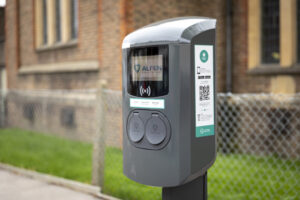Government policy on electric vehicles needs charging up
It is an exciting time for electric vehicles (EVs). Over the past few years, the transport landscape has been shifting, as disruptive original equipment manufacturers have started bringing high-tech, trendy offers to market, piquing the interest of many of us.
Added to this, the range of EVs and speed of charging has improved much more quickly than anticipated and this is set to continue.
There is still a need to reduce the upfront cost of purchase, which is currently being addressed through subsidies, but once consumers can drive hundreds of kilometres on a 10-20 minute charge in a reasonably priced vehicle, the question will become: why wouldn’t they buy an EV?
And that is exactly the question the government should be focused on. Rarely does the situation arise where there is growing consumer enthusiasm about something that could be used to fulfil pressing short-term needs, such as improving air quality, and to help meet our longer-term decarbonisation goals. The government should be taking advantage of this opportunity, but the recent Budget announcement suggests it has a long way to go.
While we welcome the idea that the UK should be at the forefront of the EV sector and that R&D should be encouraged and enabled, it is highly unlikely that technology development is going to be a constraining factor.
We’ve seen huge investments by conventional original equipment manufacturers, Tesla is developing its Gigafactory, and big brands including Google, Apple and Uber are getting involved. With the weight of private sector involvement focused on R&D, the government needs to start focusing more on the perspective of the consumer.
Linking up policies
First and foremost, it should avoid getting in the way of the evolving consumer ‘pull’ towards EVs.
Charging is a good example. People will need to feel confident they can charge when and where they want. Ensuring the development of rapid charging networks for longer journeys and urban environments is key, and eliminating nuisance associated with lack of common standards for access is a must.
Concerns about network reinforcement costs are valid, but rather than tackling these with measures to control demand, solutions should be found that benefit both the consumer and the wider electricity system, and provide commercial opportunities for new businesses.
For example, apps that offer customers the opportunity to have their supplier choose the best time to charge the vehicle when it’s plugged-in could provide a way forward. This means thinking about market structures to provide the right price signals, dynamically reflecting generation and network constraints, together with the regulatory framework for investment.
Second, it is going to be critical to link policies up in a way that recognises the broader transition underway in the road transport sector. Understanding the potential for more flexible on-demand road transport, coupled with the changing role of urban-to-rural links and potential modal shifts, will be key to anticipating radical changes to journey patterns and demand.
Add autonomous vehicles to the mix and in the decades to come the transport sector will look radically different. Simultaneously, if EV deployment is successful the government’s revenues from fuel duty will need to be replaced – opening up the opportunity for a road taxation system that reflects both environmental externalities and congestion.
Appropriately harnessed, and with policies that are suitably joined up, EVs can help the government solve the environmental, safety and social concerns around the transport sector.
Photo by ed and eddie 















